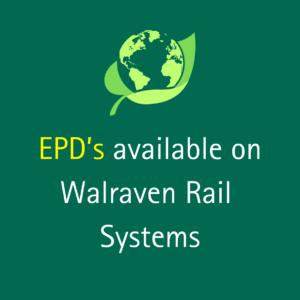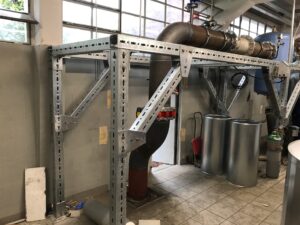 Sustainability is more than just a buzzword in construction today. It is a far reaching and complex topic and there are many elements to consider when looking at the sustainability of construction projects.
Sustainability is more than just a buzzword in construction today. It is a far reaching and complex topic and there are many elements to consider when looking at the sustainability of construction projects.
EPDs (Environmental Product Declarations) are one element that specifiers can use to help meet sustainability requirements. By specifying products with EPDs, contractors can contribute to a more sustainable construction industry, meet regulatory and client demands, and gain a competitive edge in the market.
Here are some of the benefits of specifying products with EPDs:
EPDs provide detailed information on the environmental impact of a product throughout its lifecycle, from raw material extraction to disposal. Contractors can use this information to assess and minimize the environmental footprint of their projects, contributing to sustainability goals and green building certifications.
Many regions have regulations and standards that require transparency about the environmental impact of construction materials. EPDs help contractors ensure compliance with these regulations, avoiding potential legal and financial repercussions.
EPDs are often required or recommended for green building certification programs such as LEED (Leadership in Energy and Environmental Design), BREEAM (Building Research Establishment Environmental Assessment Method), and others. Having EPDs for materials can help contractors achieve higher ratings and certifications, which can be a competitive advantage in the market.
Increasingly, clients and stakeholders are demanding environmentally responsible construction practices. EPDs provide a way for contractors to demonstrate their commitment to sustainability, differentiating themselves from competitors and meeting client expectations.
Providing EPDs fosters transparency and builds trust with clients, stakeholders, and the public. It shows that contractors are committed to using environmentally responsible materials and are transparent about the impacts of their choices.

EPDs provide valuable data that contractors can use to make informed decisions about materials and products. By comparing the environmental impacts of different options, contractors can select the most sustainable and suitable materials for their projects.
EPDs can drive innovation by highlighting the environmental performance of materials. Contractors and manufacturers may be encouraged to develop and adopt more sustainable products and practices, leading to increased efficiency and reduced environmental impact.
By using EPDs to identify and select materials with lower environmental impacts, contractors can potentially reduce waste and improve resource efficiency, leading to cost savings in the long run.
Understanding the environmental impact of materials helps contractors anticipate and mitigate potential risks associated with environmental regulations, public perception, and market changes.
Having and using EPDs aligns with broader CSR goals, demonstrating a contractor’s commitment to ethical and sustainable business practices.
We have EPDs available for our three rail systems – Walraven RapidRail® (light channel system), Walraven RapidStrut® (medium channel system) and Walraven Maxx (heavy duty frame system). We are working on EPD assessments for more of our product range.
Find out more about Walraven’s EPDs. These products are listed on NBS Source for easy specification. Go to NBS Source.


